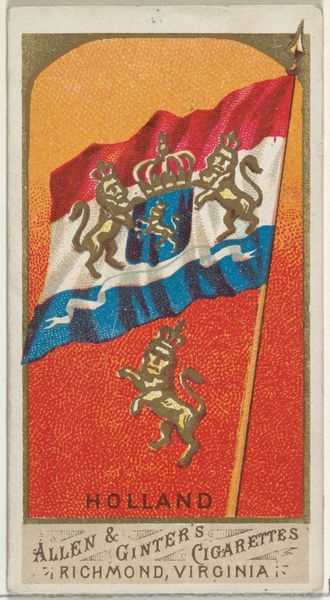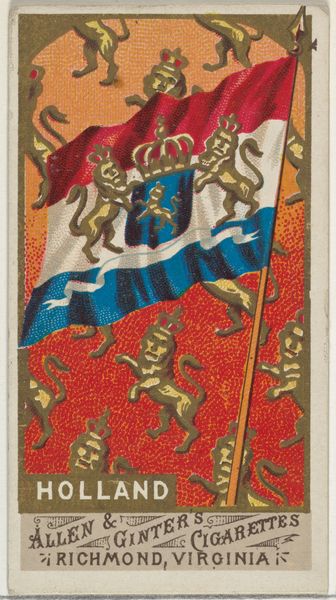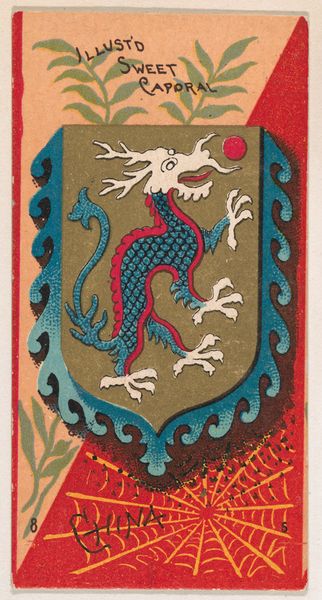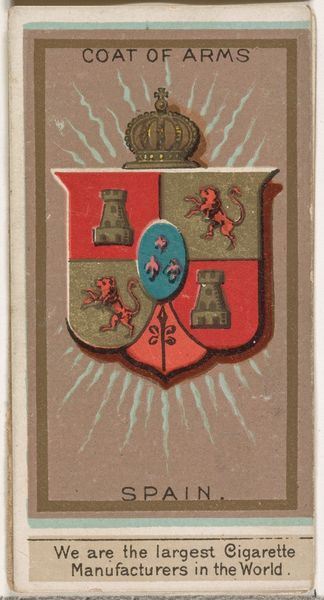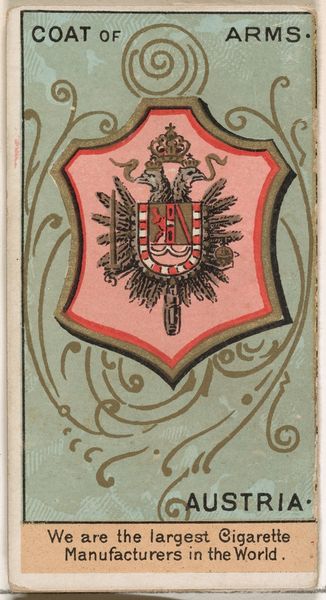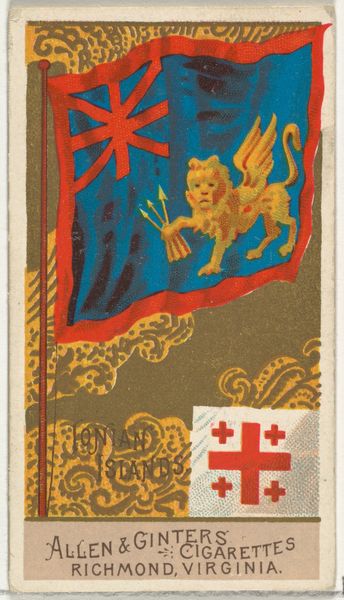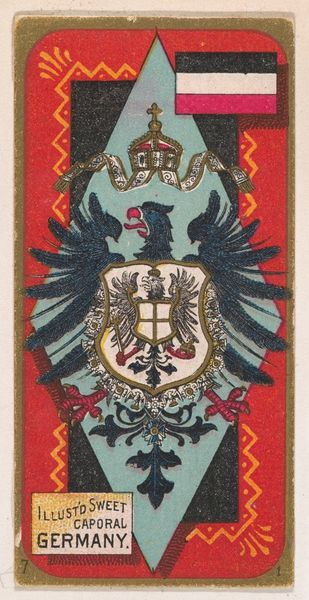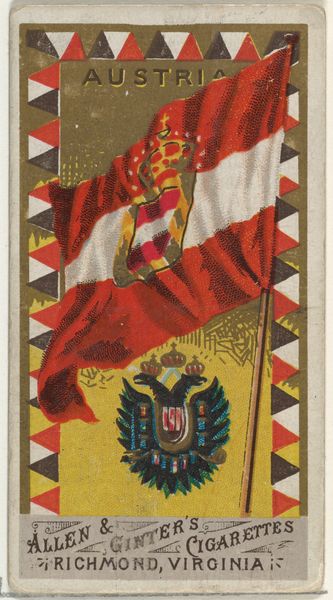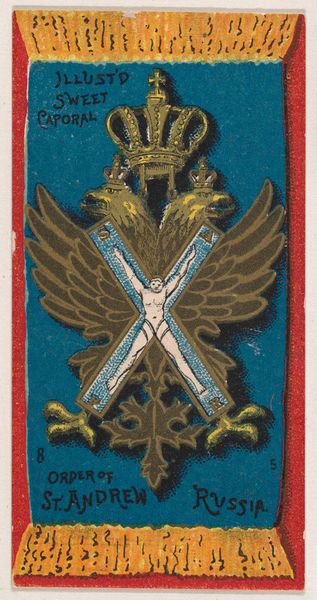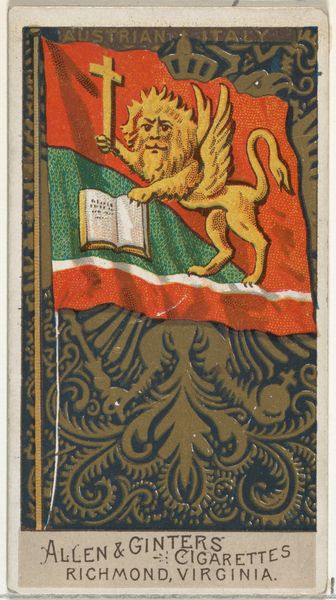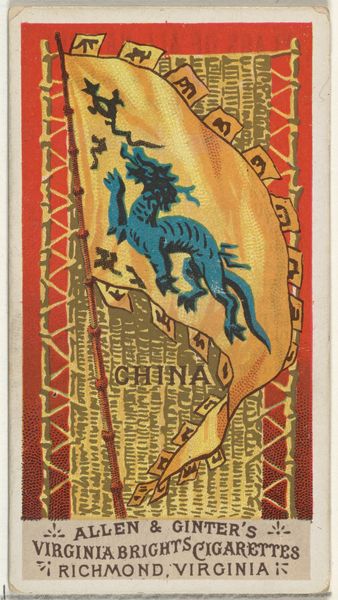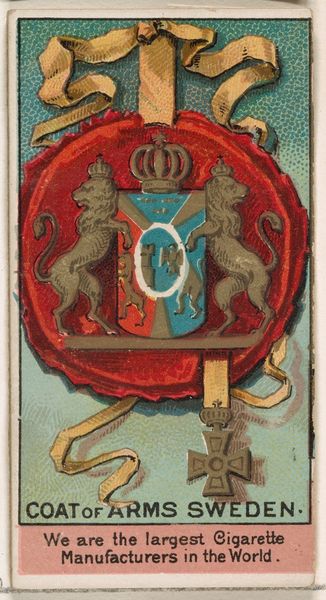
Queen of Norway and Sweden, from the Rulers, Flags, and Coats of Arms series (N126-2) issued by W. Duke, Sons & Co. 1888
0:00
0:00
drawing, graphic-art, print
#
portrait
#
drawing
#
graphic-art
# print
Dimensions: Sheet: 2 3/4 × 4 1/4 in. (7 × 10.8 cm) Sheet (folded): 2 3/4 × 1 7/16 in. (7 × 3.6 cm)
Copyright: Public Domain
This small card, made by W. Duke, Sons & Co. in the late 19th century, is a chromolithograph, a color printing technique that allowed for mass production of images. The cardstock itself isn’t precious, but the image is carefully designed: a coat of arms, printed in bold colors. The lion with an axe is a striking emblem, referencing the Norwegian monarchy, but also a symbol of power that is carefully branded as part of a series of cigarette cards. Chromolithography involved layering multiple colors from stone printing plates. Each color was printed separately, requiring careful registration to achieve the final image. This complex, multi-layered printing process was made for a mass-produced product, speaking volumes about the value placed on these collectibles. These cards were essentially advertisements, but they also provide a glimpse into the commercial and cultural landscape of the time. What was once a free gift is now in a museum, encouraging us to consider the intersection of commerce, art, and national identity.
Comments
No comments
Be the first to comment and join the conversation on the ultimate creative platform.
